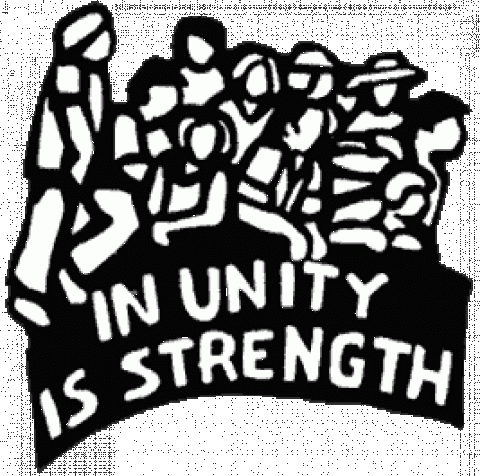Last Thursday, the United Food and Commercial Workers
(UFCW)—the 1.3 million-member union of retail workers,
chiefly supermarket employees—announced that it was
leaving the breakaway mini-labor federation, Change To
Win, and rejoining the AFL-CIO. Of the six unions that
left the AFL-CIO in 2005 to form Change To Win—the
Service Employees International Union (SEIU), the
Teamsters, the UFCW, UNITE HERE, the Laborers, and the
United Farm Workers (UFW)—only SEIU, the Teamsters, and
the Farm Workers (the last with probably fewer than
10,000 members) remain.
Two-point-zero-something unions do not a
federation make, but then, Change To Win,
despite all its lofty ambitions, never amounted
to a federation.
At its outset, Change To Win proclaimed a
distinct strategic purpose. Though its seven initial
members (for a brief time, it included the Carpenters)
represented diverse sectors of the workforce—truckers,
nurses, janitors, hotel workers, supermarket employees,
and construction workers—almost all of them held jobs
that couldn’t be offshored or easily digitized. At its
founding convention in St. Louis in September of 2005,
SEIU Vice-President Tom Woodruff told delegates that
there were 44 million non-union workers in the
non-offshorable sectors that Change To Win unions
represented, and that the new federation would wage
massive organizing campaigns to unionize them.
“We can’t run small campaigns any more,” Woodruff said.
“We have to figure out how to organize whole nationwide
companies, whole sectors and whole markets.” To that
end, Change To Win established a strategic organizing
center, staffed by some of labor’s most brilliant
economists, organizers, and tacticians.
But Change to Win quickly discovered that the same
impediments to organizing that had made it nearly
impossible to unionize private-sector workers when
its member unions had belonged to the AFL-CIO were
still very much in place now that they belonged to
the new federation.
A series of innovative campaigns to encircle Wal-Mart by
organizing its supply chain ran up against a host of
obstacles: the port truck drivers who brought Chinese
imports to Wal-Mart’s warehouses were classified as
independent contractors rather than employees; the
hundreds of thousands of workers who staffed those
warehouses, and those of other major retail outlets,
were employed by a revolving door of temp agencies.
Despite highly inventive legal and organizing
strategies, the efforts to unionize these workers
failed.
The synergistic campaigns of multiple Change To
Win unions to organize whole industries never got off
the ground. Indeed, the campaigns waged under the
Change To Win banner were the same campaigns that its
member unions had been waging before the new federation
formed, albeit now steered by strategists from a
multitude of unions. Nor did forming Change To Win do
much to remedy the structural weaknesses of some of its
member unions—weak locals, inadequately resourced
organizing—or the tendency of nearly all unions,
whether in Change To Win or the AFL-CIO, to pursue new
members in the public sector, where labor law was more
favorable to organizing.
By 2007, it was already clear that Change
To Win hadn’t cracked the code to organizing
private-sector workers. Indeed, it was increasingly
clear that the real impetus for its formation
was that SEIU, then under the leadership of Andy Stern,
had just wanted out of the AFL-CIO, and had persuaded
the other unions to follow. But for unions in
either federation, the decline of organized labor
continued apace.
Today, the AFL-CIO is seeking to
arrest that decline through its Working America
affiliate, which is a groundbreaking effort at
large-scale community organizing, and has some as yet
undefined alliance with such other progressive groups
as the Sierra Club and the NAACP. The Teamsters and
SEIU remain unlikely to return to the Federation even
if Change To Win’s strategy center were to cease to
exist. But now the UFCW, like the Laborers and UNITE
HERE, have recognized that whatever the reasons, real
and ostensible, for leaving in 2005, the reasons to
return are more compelling.
Indeed, with labor embarking on major and costly campaigns,
like Working America or SEIU’s current effort to organize
fast-food workers, that won’t likely result in more
dues-paying members, the logic of existing unions banding
together to fund such efforts is more compelling than ever.
It’s in that spirit that yet another prodigal has returned.


Spread the word